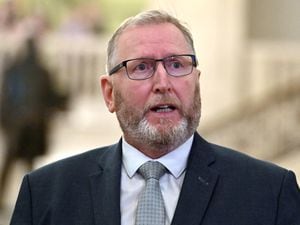Significant weaknesses found in ‘optimistic’ NHS workforce plan, report says
The NHS long term workforce plan aims to add more than 300,000 extra staff over a 15-year period.

NHS England has been over-optimistic and there are “significant weaknesses” in its plan for the future of the health service workforce, a report has found.
The National Audit Office (NAO) said leaders had relied on “top end” assumptions about how many medical and nursing undergraduates there will be by 2031.
NHS Providers, which represents health trusts, described the findings as “deeply concerning”.
The NHS long term workforce plan outlines how the health service expects to add more than 300,000 extra nurses, doctors and other health workers to its headcount in England over 15 years.
Measures include doubling the number of medical school places and improving working culture to retain staff.
When it was published in June 2023, the plan estimated the 1.4 million-strong NHS workforce of full-time equivalent staff would have to grow to between 2.3 million and 2.4 million by 2036/37.
However, the NAO said some of the assumptions used “may be optimistic”.
These relate to “historical trends” that the NHS thinks will continue, the report claims, while others relate to targets “which will require policy changes and significant investment”.
This includes the assumption that the number of medical undergraduates will double – and nursing undergraduates will almost double – between 2022 and 2031, which the report said “is at the top end of the maximum expansion NHSE thought theoretically possible”.
However, NHS England failed to factor in the potential need for more higher education facilities, technologies and clinical academics, according to the report.
The workforce plan also assumes overseas graduates will continue to “fill gaps” until the supply of domestic staff increases and that no international recruitment would take place from the mid-2030s.
However, the NAO said “this is not a reasonable modelling assumption”.
A gap between demand and supply of fully-qualified GPs was also identified in the report.
Gareth Davies, head of the NAO, said: “The creation of the modelling that underpins the long term workforce plan has been a significant undertaking.
“However, NHS England must strengthen its workforce modelling next time around to make better-informed decisions about the NHS’s future workforce.”
Dr Navina Evans, NHS England’s chief workforce officer, said the long term workforce plan is “based on credible and robust modelling” which has been developed by experts and assessed by think tank The Health Foundation.
“We have always committed to updating the modelling regularly and will implement any necessary changes, considering the NAOs recommendations, as we develop future iterations,” she added.
Responding to the NAO report, Saffron Cordery, deputy chief executive at NHS Providers, said: “Trust leaders want – and need – the NHS long term workforce plan to be a success.
“It is therefore deeply concerning that ‘significant weaknesses’ in its modelling have been identified. Realising the plan in full will also depend on additional funding.”
Ms Cordery also called for investment in NHS infrastructure to bolster productivity.
“Overstretched staff are working flat out to treat patients with increasingly complex conditions within existing resources and in the face of relentless demand,” she said.
“More widely, trust leaders know that for the NHS long-term workforce plan to succeed – and help ensure the sustainability of the health service – there must be more support for social care. Social care needs a fully-funded long-term workforce plan too.”
Dr Billy Palmer, a senior fellow at think tank the Nuffield Trust, said: “There is no single route to overcoming the staffing needs our growing health and care services need.
“The workforce plan was rapidly produced and this report makes it clear that further work is needed by national bodies to ensure the ambitious goals within this landmark plan match reality.”
Anita Charlesworth, director of the REAL Centre at the Health Foundation, urged all political parties to commit to funding the expansion of NHS workforce training ahead of the next general election.
She added that the plan “relies on optimistic assumptions about improving NHS productivity” but warned that “will be a pipedream without significant investment in capital and technology, which has lagged behind comparable countries for decades”.
Ms Charlesworth welcomed the additional £3.4 billion announced by Chancellor Jeremy Hunt in the March 2024 Budget “if the money is actually spent as intended”.
A Department of Health and Social Care spokesperson hailed the workforce plan as “the most ambitious transformation to the way we staff the health service in its history”.
“We remain on track to deliver the plan and protect the long-term future of the NHS, including by doubling the number of medical school places in England to 15,000 by 2031, and there are already record numbers of staff in the NHS,” they added.
“The modelling used by NHS England is founded on robust data, evidence and analysis, and will be refreshed every two years or in line with major fiscal events.”





